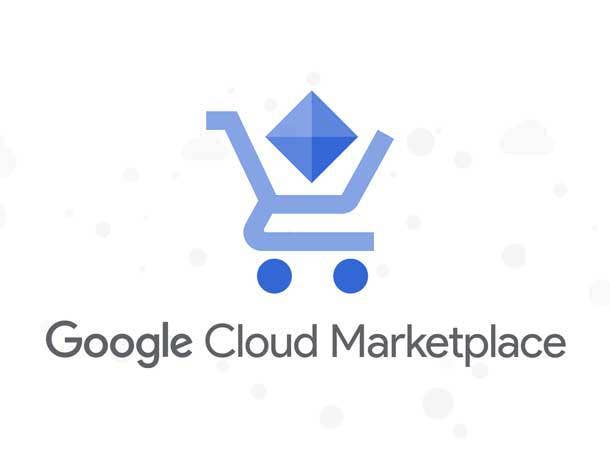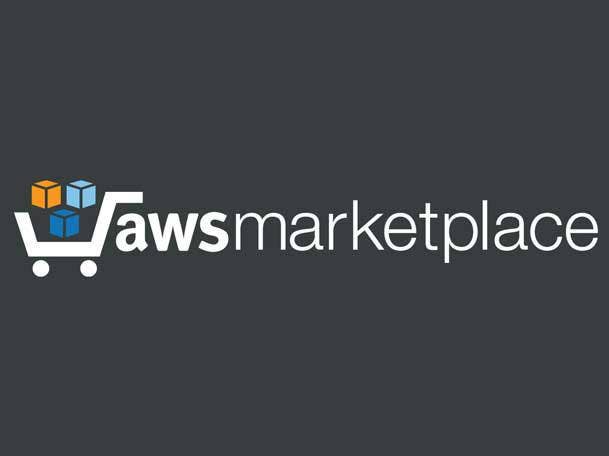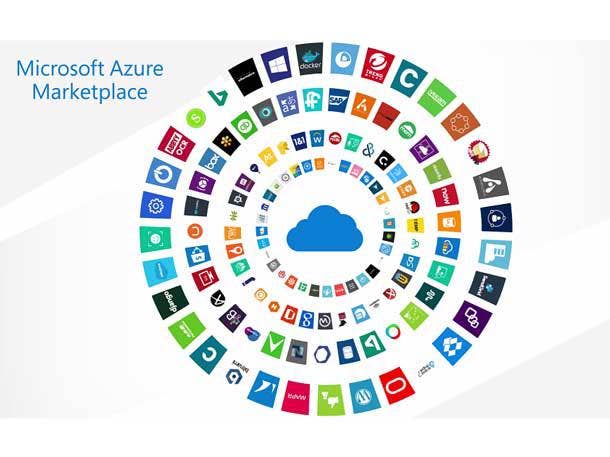Cloud Marketplace Guru On AWS, Microsoft, Google, ISV Trends
Cloud marketplace veteran and CEO of Tackle.io John Jahnke explains today’s cloud marketplace industry and the selling trends from ISVs and channel partners who are leveraging AWS, Microsoft and Google Cloud marketplaces.

Tackle.io CEO John Jahnke is an expert in helping independent software vendors (ISVs) drive revenue through cloud marketplaces from the likes of AWS, Microsoft and Google Cloud, and believes 2023 is the year solution providers need to dive deeper into the $15 billion cloud marketplace opportunity.
“We have seen over the last two years, a big acceleration in channel partner-plus ISV-plus-the cloud marketplace provider—and I think that’s only going to accelerate,” Tackle.io CEO Jahnke tells CRN. “For example, AWS created a program called CPPO (Channel Partner Private Offers). Roughly a little north of 20 percent of our customers take advantage of the CPPO program today.”
“Similar to how every channel partner is trying to figure out, ‘What is my strategy in this new era of cloud?’ Cloud marketplaces and cloud go-to-markets are almost the next chapter in that story,” Jahnke said.
[Related: AWS Marketplace’s ‘Incredible’ New Vendor Insights Tool]
$15 Billion Cloud Marketplace In 2023
Tackle.io works with more than 550 software companies to help them capture the increasing amount of IT spending that’s headed to the world’s leading cloud marketplaces including AWS, Microsoft Azure and Google Cloud.
Market data from the Boise, Idaho-based company projects $15 billion of software sales will flow through the hyperscale cloud marketplaces in 2023 alone. IT research analyst firm Canalys estimates that cloud marketplaces will grow to over $45 billion by 2025.
ISVs and channel partners leverage cloud marketplaces as a new route to market where customers can draw down on their cloud committed spending contracts, including buying third-party software, as well as streamline the procurement process. The Tackle Platform helps customers start selling their solutions on marketplaces, better co-sell with cloud providers and help align their business strategy with the cloud providers to accelerate sales.
Jahnke said the largest cloud providers have all lowered their marketplaces fees in recent years, allowing more profits for ISVs and channel partners. “Microsoft and Google last year changed their fee structure to be more competitive and more aggressive, where they lowered the fees from a Marketplace standpoint in order to go on the offensive to capture share,” he said.
Jahnke has been CEO of Tackle.io since 2018 following a vast IT career working for the likes of Cognizant, Pivotal and EMC. In an interview with CRN, Jahnke takes a deep dive into the current state of the cloud marketplaces as well as the future.

What types of businesses are buying via cloud marketplaces today? Who are the cloud marketplace buyers in 2023?
Today, it’s the people with a cloud commitment. So whether that’s a PPA (Private Pricing Addendum) from AWS or an enterprise agreement from Microsoft or a GCP (Google Cloud Platform) enterprise agreement—it’s the people who make those cloud commitments because those budget dollars can be used for either first-party or third-party software through the Marketplace.
If you think about the minimum commitment for those agreements, it ends up being seven figures. So it’s a company whose committing more than seven figures to the cloud, who has one of these agreements, but those go up to billions of dollars in scale.
I’d say you see more medium to large companies from a buyer pattern standpoint today.
Another element of the marketplace that’s interesting is that it’s not necessarily where people are shopping today. It’s where people are fulfilling their contracts. So the shopping experience for software hasn’t changed yet.
All of the clouds want to change the shopping experience, but we’re still in the era of it’s more aligning fulfillment to be able to leverage the cloud contract versus someone going onto the AWS Marketplace or Azure Marketplace to find something and just clicks and buys it.

Microsoft, Google and AWS have the largest cloud marketplaces. What differentiates these three cloud marketplaces?
The market share for cloud marketplaces mimics the cloud market share pretty closely. That’s the easiest corollary to draw between them. They all have different incentives. They all have slightly different formulas.
Today, AWS has slightly higher fees because they have the most market share, but they also have the most [volume] flowing through. They have the most mature co-sell process. So from a value standpoint, the perception is there is value for the fees exchange.
Microsoft and Google last year changed their fee structure to be more competitive and more aggressive, where they lowered the fees from a Marketplace standpoint, in order to go on the offensive to capture share.
They all pay salespeople in different ways with different percentages for these enterprise agreements. In general, we continue to see all three of them are winning. They’re all growing with the ecosystem.
For all the platform providers, it’s how do they drive core service consumption? They want to be able to have a third-party product that complements their first-party core service. The combination of those gives the buyer the best outcome possible. So there’s multiple benefits. The fees are one benefit, but driving consumption is another benefit for each of them.
Can you explain what these fees are?
It’s a transaction fee. So it’s different than a royalty structure. Some other marketplaces have a royalty-based structure—like Salesforce AppExchange—where if dollars flow through the marketplace, there’s a royalty associated with your product because it’s listed in AppExchange.
The hyperscalers [AWS, Google, Microsoft] take a different approach to that, where really you’re only paying a fee if you’re executing on that transaction in marketplace and using the cloud budget dollars.

Where are you seeing channel partner momentum in cloud marketplaces right now?
In the channel, we have seen over the last two years, a big acceleration in channel partner-plus ISV-plus-the cloud marketplace provider—and I think that’s only going to accelerate.
For example, AWS created a program called CPPO (Channel Partner Private Offers). Roughly a little north of 20 percent of our customers take advantage of the CPPO program today. We are seeing a lot of growth in channel plus-marketplace right now.
We’re definitely seeing it with the big channel partners like Presidio, World Wide Technology (WWT), Optiv, CDW, Insight Enterprises— they all are more marketplace forward. Maybe they haven’t gone fully mainstream like, ‘We will do Marketplace by default.’ But they have a significant number of the ISV partners they work with, who work with Marketplace. And then they have significant transactions happening through marketplace.
We are working with AWS on how to make the channel experience with marketplace more seamless for both ISVs and channel partners.
We have those big channel partners come to us and say, ‘I do cloud Marketplace business with 100 ISVs. I have no way to see that in a single integrated way. I’d love a version of Tackle like what you have for an ISV, that has more of a channel focus.’ We’ve heard that request numerous times and that’s an area that we’re starting to invest more in this calendar year.

What’s your advice for channel partners who haven’t explored cloud marketplaces yet?
The nature of the channel business is ever evolving. From the days of resell to the days of providing managed service and value-added services on top of that.
The marketplace journey is just another part of that evolution. As these businesses evolve to be more cloud-forward, they want to be able to have solutions that make the most sense for their buyers that are a combination of first- and third-party cloud services, plus services provided by channel partners.
Today, the majority of the way the Marketplace works with channel is really about executing on the software transaction.
There are ways to do services with Marketplaces, but there’s some still some clunkiness in the way that works today. But similar to how every channel partner is trying to figure out, ‘What is my strategy in this new era of cloud?’ Cloud marketplaces and cloud go-to-markets is almost the next chapter in that story.
They’re going to think about, ‘How many certifications do I have? What partner do I work with? How do I promote that with my customer base?’ and then Marketplace becomes a different part of that story.
Do you see Tackle adding more channel partners to your customer base?
Yes I do. I believe this is the year of the channel and cloud marketplaces.
We’re committed to investing more to help them. Today it’s really about how do we help ISVs and channel partners succeed with the cloud and then that takes us on the natural journey of, ‘How do we continue to help the channel succeed with cloud?’ We here to help ISVs sell more, sell faster, sell more efficiently. Today we’re about the ISV-plus channel, but we’re feeling this natural gravitational pull to do more for channel partners.

What does the cloud marketplace space look like in five years?
The B2B software budget and the cloud budgets are becoming one. This is the next great cloud migration and a massive opportunity over the next five years.
With my ISV hat on, today you may still have single-digit percentage of sales people inside of ISVs who know how to win with cloud go-to-market. Five years from now, this will be a default play. It’ll be a default path to market for every seller. Every seller will know how to win with cloud.
It won’t be the only way. It’s not like 100 percent of the dollars are going to flow there, but we do this State of Cloud Marketplaces Report every year, and this year, 44 percent of our ISVs said they will do 10 percent of their business through Marketplace in 2023. … It’s powered by the cloud budgets. I got really excited by that 44 percent of sellers thinking it will be 10 percent this year alone, and we’re really still in the early days.
I’d say 2017 through 2019 was very much the early adopter mode. 2019 is when we went from AWS really having a leadership position, to Microsoft and Google starting to emulate the similar programs that AWS had put in place. We’re past the early adopter curve now where most ISVs have acknowledged this go-to-market route that works and it’s one that they want to scale.
The projection for 2023 is about $15 billion of software will flow through the hyperscale cloud marketplaces. Canalys research says by 2025, they expect that number to be $45 billion. So that means growth percentage rates are in the high 80s [for cloud marketplaces] compared to core cloud service growth rates of around 30 percent for the hyperscalers.